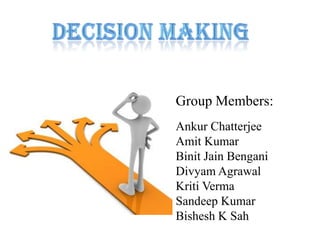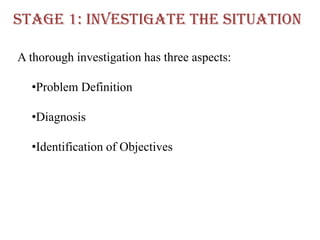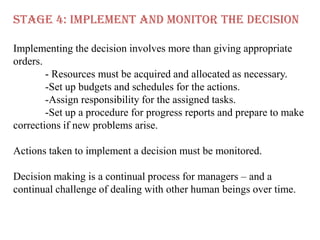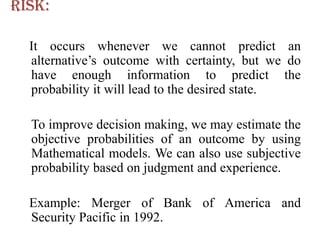The document discusses:
1. Group members for a project.
2. Decision making as identifying and selecting a course of action to solve problems based on evaluating alternatives.
3. Key elements in decision making like time, human relationships, and nature of decisions.
4. Types of decisions like strategic, tactical, and operational.
5. Herbert Simon's categories of programmed and nonprogrammed decisions.
6. The rational model as a 4-step process for weighing alternatives and choosing the best option.


































































